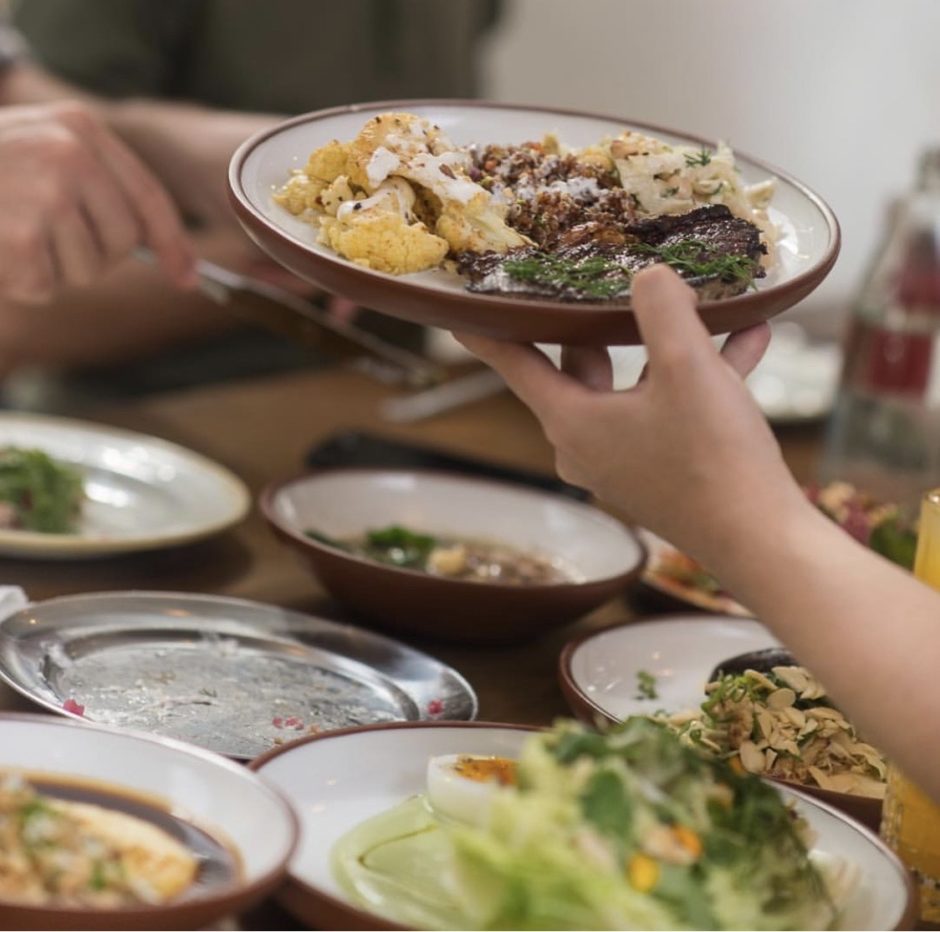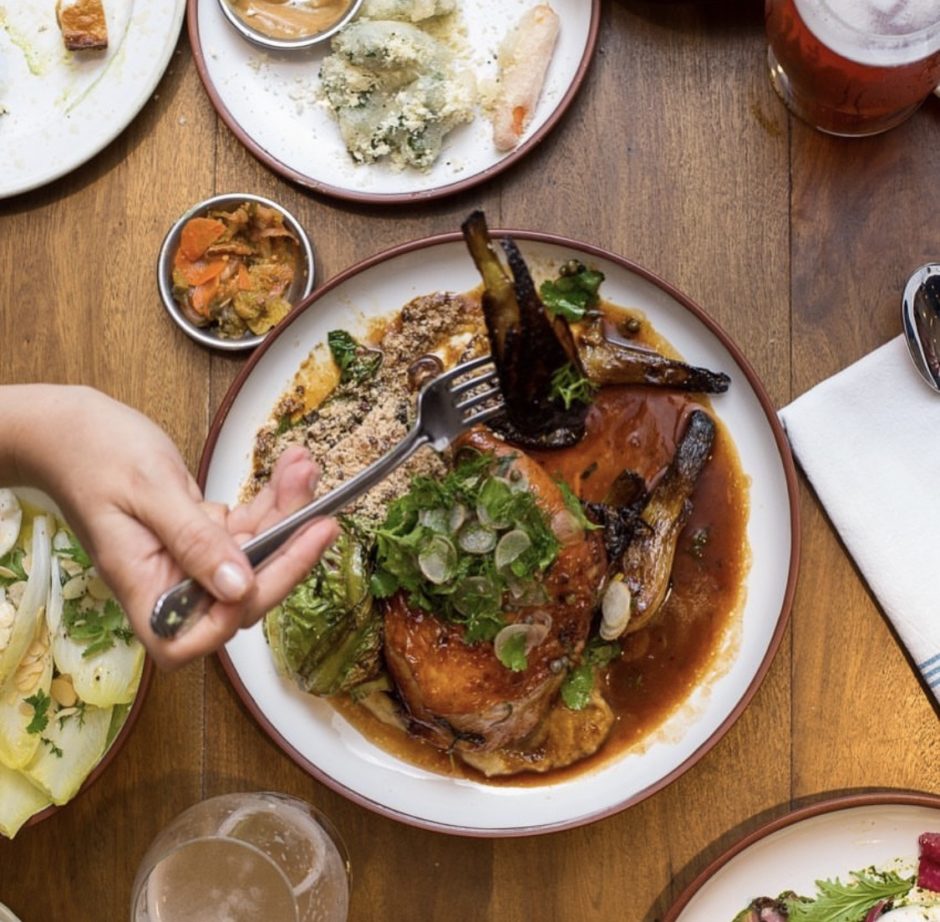
Argentina is well-known for its heavy meat-intake, but after years of high inflation, booming exports combined with shifting food trends, the country that used to lead the world in red meat-consumption is changing its diets. Last year, Argentinians ate about 51 kilograms of red meat per person, the lowest level since 1920.
Health is one reason for the decline. Obesity rates are high and two-thirds of adults in Argentina are considered overweight. Vegetarian and health-focused restaurants have popped up in several neighborhoods in Buenos Aires and even the world-famous steakhouse Don Julio is now offering non-meat options.
But for many, it’s more about affordability.
According to a new report by Bloomberg, Argentinians can no longer afford to binge on their own beef. Inflation has been running over 50 percent in the last three years, and wage growth is lagging behind. Red meat is becoming more of a luxury than a necessity.
Red meat is becoming more of a luxury than a necessity.
A frontrunner for the positive benefits of the shifting food trends is Narda Lepes, a famous Argentinian chef and campaigner for healthy and sustainable diets. By showing that the traditional asados (barbecues) do not need to involve a heavy meat-intake, she is inspiring Argentinians to eat larger portions of vegetables and whole grains, and less of their beloved steak.

Turning the Wave of Beef
If you go to a regular asado at somebody’s house and you put more than one red bell pepper on the grill, somebody is likely to reprimand you. Meat is viewed as the purest thing in Argentina. “People may say, ‘we have the best beef in the world,’ but in general, people don’t know where it comes from or how it is made. They just swallow it,” says Lepes, who is currently listed as one of the few female chefs on the 50 Best Restaurants in Latin-America.
Her restaurant, Narda Comedor, is built around a few simple concepts: eat vegetables, eat seasonal, try new things and drink plenty of water. Since opening in 2017, Lepes and her team have introduced Argentinians to what a healthy diet could look like, proving that a plant-forward cuisine can offer nutritionally balanced mouthfuls.
…a plant-forward cuisine can offer nutritionally balanced mouthfuls.
Narda Comedor serves grass-fed beef, pork belly and fish, but the vegetables are the centerpiece of each plate. The menu consists of many plant-based entries and some meaty mains. By introducing tasty alternatives such as bibimbap, a spicy Korean rice dish, and ginger and chili-flavored “Tofu Trash,” Lepes hopes to inspire people to eat a more balanced diet.
“We work with umami a lot. We use anchovies, fish-sauces and meat broth to add flavor to the vegetables. So even if you’re only eating veggies, it will have that taste of fat or sugar,” says Lepes.
“We also eat a little bit of everything. But it’s not only what you eat, but it’s also how and with whom,” explains Lepes, referring to the get-together concept of asados, which lies in the heart of Argentine culture.
Despite the high quality, the prices are low, making it a place locals visit regularly. Tables share the plates like a meze, making it a social and enjoyable experience.

Transitioning into modern-day cuisine
For years, the classic cuisine in Buenos Aires has largely been defined by old-fashioned parrillas (steakhouses) and bodegones (local joints) serving empanadas, milanesas (meat dipped in eggs, salt and bread crumbs, then shallow-fried in oil) and heavy red-sauce Italian fare such as pizzas, pasta and lasagnes.
Now it’s easy to find a healthy and filling salad, vegetarian options, sourdough bread and housemade pickled vegetables. The international food scene has blended in with the old one, making it an interesting mix of traditional and modern-day cuisine.
Similar approaches to Narda Comedor have appeared in Buenos Aires, and beyond. Examples are chefs Augusto Mayer and Leo Lanussol, who serve fresh vegetarian dishes and grass-fed beef at their forward-leaning restaurant Proper. Lanussol has learned his tricks from working under Narda Lepes for eight years. Proper is a former auto-repair shop turned in to an open kitchen, with awood-fired oven and restaurant. It has become a popular neighborhood restaurant in the outskirts of Palermo, a posh part of Buenos Aires, and always has a huge line out front.
Another restaurant with a similar approach is Obrador Las Damas in the outskirts of Villa Crespo, an up-and-coming neighborhood located in the eastern part central Buenos Aires. Obador serves an interesting mix of Korean, Italian and Argentinian, and all the dishes can be made without meat.
…bigger plates of legumes and vegetables and smaller plates of meat and fish will lead to a more plant-forward cuisine in Argentina.
While many vegetarian and vegan restaurants are popping up in Buenos Aires, Narda Lepes believes the mix between sharing bigger plates of legumes and vegetables and smaller plates of meat and fish will lead to a more plant-forward cuisine in Argentina – a diet that could combine the old and the new.

The Red Flags of Food
Quoting Spiderman “with power comes responsibility,” Lepes takes her influence through followers from high-profile TV Shows such as “MasterChef Argentina” and her own travel and cooking program.
“I started realizing that people listened to me and that it wasn’t just about the recipes, it was some tricks in it, or things I said or my enthusiasm for food. Somehow my audience grew.”
Working on her travel series, Lepes discovered deep-rooted health problems all over the world.
“I see patterns, and what I saw when traveling was a lot of poor people, overweight and unhealthy foods. The red flags were everywhere.”
Lepes started reading about the food industry to understand the factors leading to unhealthy habits. She did work for big companies like Unilever to see how products were developed and produced.
“When you see how things are decided, you get frustrated. Sometimes people have no idea of what they are selling.”
Lepes talks about the lack of ethic in the bigger companies producing products for children and young ones. Products like yogurts and juice often contain high doses of sugar, and together with ultra-processed foods, they are marketed towards children.
Figuring out the Food System
After six years of researching, Lepes published her first book aimed at parents who want their children to eat well. Ñam Ñam was inspired by the birth of her daughter Leia, now eight. Lepes’ journey of feeding her daughter resulted in this creative guide to offering plenty of solutions that ensure feeding is always fun and never a chore.
With the book, she is hoping for a wider consciousness about the food habits we incorporate, both for children and adults.
“Our definition of food is bad. Edible is not food. What’s fundamental to the food system in Argentina is nutrition. If you try to read the argentine guidance for feeding people, they are boring and complicated.“
According to the World Health Organization, only six per cent of the adult population meets the daily recommended five servings of fruits and vegetables. The low consumption pattern of fruit and vegetables, mixed with the high intake of sugar, salt and red-meat are taking its toll on Argentinas. Obesity rates are high and two-thirds of the adult population in is considered overweight, which the FIC Argentina (Fundación InterAmericana del Corazón) believes is attributed to the lack of effective public health policies in the country. The high number of 73 per cent of deaths each year are caused by non-communicable diseases like diabetes and heart disease.
“We are flooded with recipes, but our connection with food is not there. Ingredients are hidden behinds names like pasta carbonara and pizza. We have lost our connection with the ingredients. We don’t know how food is grown anymore. Where it comes from, how it’s made,” explains Lepes.
Our link to food is broken, and it’s gonna take a lot of work to get it back together.
Our link to food is broken, and it’s gonna take a lot of work to get it back together.
While a reluctant movement is shifting toward healthier and cheaper proteins, mostly because of the economical situation, Lepes is keeping her hopes up and taking it step by step.
“I could be naive and say that the tide is turning on beef. But I’m not. When the economy is better, people will start to eat more meat again. But at least we have got to eat better meat. That is something we can start with right now.“